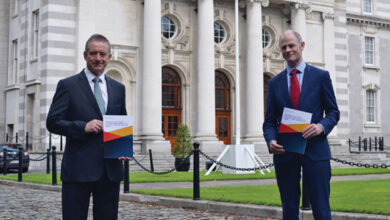Social citizen engagement

Head of Digital and Content, Scottish Government, James Coltham, discusses meaningful citizen engagement through social media.
Coltham manages a team responsible for the Scottish Government’s main website, its blog platform, online consultations platform and its various social media channels.
The social content hub was established in September 2018 bringing together many of the various talents in video and social content within the Government to form a central hub planning and producing content throughout the various channels. However, the hub is not responsible for all of the over 100 accounts linked to the Scottish Government and instead acts as a centre of excellence in selling the benefits of doing social well and training communications staff on key skills for success and mitigating against risk.
The Scottish Government boasts an average monthly reach across its channels of 3.4 million, including almost 100,000 engagements. Twitter remains its largest channel with 168,000 followers, above Facebook (73,000) and Instagram (16,000).
Coltham outlines an understanding of the balance between engaging content and important content. Ensuring that important messages are also engaging facilitates a broader reach.
“With everything that we put out, we know that it’s important. It can be life and death sometimes. But is it engaging? Our role is to ensure that we make it as engaging as possible, so that it reaches as many people as possible,” he explains.
To this end he outlines the five key principles for content from the Scottish Government through social media:
Think audience first. Coltham highlights that often items are brought to his team regarding new policy, new research or an announcement, for example. His team’s role is to assess its importance to the general public through key questions such as, who is the main audience, what are their preferred communication channels and what time are they most likely to engage. An example he points to is a recent short video on LGBT inclusive education policy. In recognising the right channels for engaging with an interested audience, the video reached some 2.5 million people. He also points to an education role in things such as the Budget, recognising that while the mainstream media might cover the key points of any announcement, the Government have a means to offer a greater understanding of what an decision will actually mean, through social channels.
Have a plan. With any campaign or launch, marketing and social teams of the Government use SUSSED (scope, understanding the research, set objectives, strategise and test ideas, execute the campaign and debrief and evaluate). Coltham explains that planning and scheduling is a huge part of his team’s role to ensure a constant stream of engaging content across the week and weekends. As well as staying on top of the daily news agenda, the team looks ahead three months and prepares content well in advance to ensure no backlog occurs.
“We develop across the organisation and across a mix of topics, recognising that some topics will prove more interesting to our audience, however, we also have a duty to cover all aspects of what government does. To this end, planning ensures we are talking about the various policy areas equally and recognising how that will feed out to the various channels,” says Coltham.
Learn as you go. Coltham explains that this is a philosophy highly valued by his team and one that they try to share across the organisation. Constant evaluation and analysis of the content it produces means that it can better understand those features that have worked and those that have not. “We’re a team that loves figures and data. We recognise that if other parts of government are not asking us for those figures then something is wrong. To this end, we try to create an appetite for data, numbers and insight across government and embed that culture of learning across all channel output,” he explains.
An example pointed to by Coltham is the use of captions on video content. 73 per cent of the Scottish Government’s Facebook followers watch videos without audio and with this knowledge the team work to create videos with “snappy” scripts. An additional upside that correct use of font in this regard also improves accessibility for a wider number of people. Similarly, most of their audience watch their content on their phones and so templates have been created that best suit the various channels and bringing with it a greater level of consistency in output.
Show don’t tell. The Scottish Government never posts content without a visual tool, explains Coltham. This means fully utilising an existing bank of images and video to communicate key message. In its experience, video also increases the level of engagement through online conversation by bringing topics to life and so has been utilised as a vital tool when seeking responses around things such as consultations
Staying on brand. Coltham explains the necessity for all of the Government’s social media channels to exhibit three core elements of consistency, approachability and responsiveness. “If any one of those channels strays from that formula, then there is a loss of trust and confidence because it introduces risk to the organisation. An important role of my team is to keep everyone on brand,” says Coltham.
“Although we only directly manage the primary @scotgov channels, there is only one Scottish Government in the view of the general public. We represent the whole organisation, so it’s really important that we present a consistent and recognisable brand on social.”

“A consistent tone helps
us seem approachable online, which is particularly important if you’re trying to get people to engage or act on your content.”
He explains that one of the first things his team did was create social media branding and style guide, adding: “Branding is key to letting people know that what they’re seeing is official Scottish Government content.”
Similarly, another important change was the introduction of a “tone of voice”. Coltham explains: “A consistent tone helps us seem approachable online, which is particularly important if you’re trying to get people to engage or act on your content. Something as simple as saying, ‘We are launching a new grant for…’ instead of ‘The Scottish Government is…’ has made a huge difference in how we present the organisation online.”





